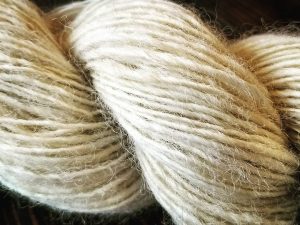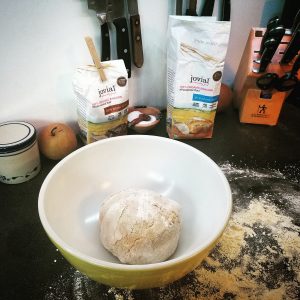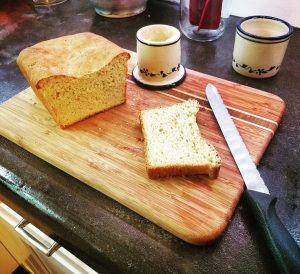“Gobekli Tepe, located in modern-day Turkey, was built by a vast community of organized hunter-gatherers who worked together to create megalithic sacred temples over generations. Einkorn was domesticated, not by chance discovery but may be a result of organized food production by the builders of Gobekli Tepe…. ‘What we are learning in Gobekli Tepe is that civilization is a product of the human psyche itself, the striving for meaning that thereby created agriculture. This is the opposite of what anthropologists conventionally thought.’”
While reading Restoring Heritage Grains, my thought and learning processes were somewhat round-a-bout and not entirely related to heritage grains. When I came across the above quote in the book, I was curious as I had never heard of Gobleki Tepe, and my learning also mirrored the more traditional thinking of anthropologists, in that humankind first learned to farm and only then created permanent settlements. Gobleki Tepe turns that idea on its head; it is the first evidence we modern humans have found that indicate prehistoric humans first built permanent structures and settlements, and only then did they learn to farm and domesticate crops and animals. I found this fascinating.
Later in the book, the author begins to explain the importance of farming and grains in various ancient world religions. “In the mythology of almost all civilizations, the knowledge of farming is a gift from the gods. Each culture teaches a unique story with local sacred beings, but the divine nature of farming echoes throughout.” Rogosa then goes on to touch upon specific religions from the modern-day lands of the Mediterranean to China to Mexico. Gobleki Tepe, it is theorized, was built as a shrine or a place of worship, and is decorated with various carvings of animals such as tigers, serpents, and spiders. When exactly did prehistoric man’s religion cease to be dominated by animals and instead, became largely influenced by farming and grains, and how did it happen? Was it a gradual shift over hundreds or thousands of years, or was it a more sudden move, relatively speaking, similar to the spread of Christianity from antiquity to the Middle Ages?

With a limited amount of “spare” time, I did a small bit of internet research in an attempt to get a broader view of Gobleki Tepe and how human civilization evolved. What I learned in my scant research about Gobleki Tepe is not really relevant to the learning we are focusing on with the reading of Restoring Heritage Grains, so I won’t include it in this writing. However, it did raise more questions in my head regarding domestication, civilization, and my own personal interest in spinning yarn and fibers. The origins of spinning are unknown, but it is truly an ancient art, predating even pottery. How does spinning fit into the narrative of farming and domestication as religion and culture as outlined by Eli Rogosa? Did ancient peoples learn to spin plant fibers first, or animal fibers? The first wool fabric that has been found was dated to 4000-3500 BC, how was it made, and who made it? Who made the first spindle? All these questions and more kept circling in my head.

I took a break from reading and research and began the first of many attempts to make einkorn bread, hoping that the comfort of my kitchen and the soothing feeling of dough in my hands would help organize my thoughts. Instead of organizing thoughts and information into neat compartments and categories, I began to build a picture in my mind of ancient peoples and their path to discovery. How accurate my internal representation is/was is entirely debatable, but creating those images somehow helps to bring me closer to understanding the “big picture” and how we have become what we are today. As I measured and mixed, I thought back to the days when there were no temperature-controlled ovens or non-stick metal pans or even measuring cups and how people managed to survive and even thrive; creating delicious food and beautiful works of art, discovering new ways to dress and build, domesticating wild animals then breeding them for specific traits. All of those thousands and thousands of years of evolution and progress to bring us where we are now. Are we thriving? We’ve wiped out most of those ancient grains that were so instrumental to our ancestors and their journey and replaced them with a monocrop of sickness and poison. Where do we go from here? Obviously we need to look back and revisit those old ways of doing and growing things… but would that be considered progress or regress? So many questions.

For now, I will continue to spin yarn and improve my craft and wonder at the master spinners who came before me. I will knit clothing for those I love and feel a connection to my ancestors who did the same. I will continue my quest to make the perfect einkorn bread, as I am enjoying the journey even with multiple failures under my belt (and in my belly).